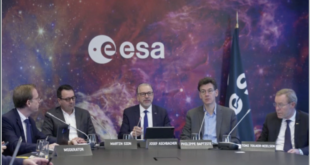
By Hamza Hameed
Is it time for a shift in norms: does the recent pandemic finally push the space sector into using asset-based financing? Could the OneWeb insolvency have ended differently?
In an industry sometimes regarded as a playground for billionaires, the number of new entrants has been growing at a surprisingly fast rate over the past decade. While the Musks and Bezoses of the world still continue to play a significant role in shaping the sector, space has seen democratisation — primarily as a result of the potential to use commercial off-the-shelf components to build space objects, as well as the injection of large sums of private sector financing to support ambitious space ventures.
Despite its capital-intensive nature and the high-risk profile of investments, space companies and financiers alike continue largely to rely on angel investors, venture capital, or project financing when it comes to funding space businesses. While these medium-to-long term mechanisms allow financiers to develop exit strategies based on the viability of a project, lending rates greatly depend upon the value of the on-ground collateral a company can offer, or the general strength of their balance sheets.
In times of crisis, such as the current COVID-19 pandemic, liquidity dries up and companies find it harder to continue to acquire the financing they need to develop their projects. OneWeb, a company which had planned to launch more than 600 satellites to provide broadband data across the world, was once valued at US$3.25 billion and had already launched 74 satellites into orbit, became one of the victims of the pandemic and had to file for Chapter 11 bankruptcy on 27 March – only six days after having launched an additional 34 satellites.
The company was in the midst of talks with its majority shareholder Softbank (37.41%) for a fresh US$2 billion in funding when the pandemic hit, and the share price of Japan’s second largest publicly traded company fell close to 50% of its price in February. OneWeb’s debt now stands at over US$1.7 billion, and the company has no buyers lined up due to the excruciatingly high costs of developing, launching, and profiting from a satellite constellation project. Among others, OneWeb’s creditors include companies such as Arianespace, which is owed US$238 million in unsecured claims.
Asset-based financing as part of a system of international secured transactions law has proven to be successful in sectors comparable to space. An example can be taken from the aviation industry, where the International Registry designed to record international interests in aircraft equipment, as defined under the Aircraft Protocol of the Cape Town Convention, recorded its one millionth registration in 2019.
A system of secured loans in an asset-based financing model allows financiers to invest in exchange for an interest within the asset itself – directly allowing the financier to repossess and sell the asset to a new operator in case of the original debtor’s insolvency. Examples from recent airline bankruptcies such as Jet Airways and Thomas Cook showcase how financiers can take control of individual assets and recover their investments by selling them forward to a multitude of buyers. Such a model also decreases the cost of financing as the risk which the financier assumes is lower than compared to project financing or venture capital.
When part of a global system, where interests in assets retain priority through globally enforceable laws, such as the Cape Town Convention, all stakeholders within an industry can benefit and this results in an increase in the number of operators which enter the market. A similar international legal instrument exists to facilitate asset-based financing in the space sector – this is the Cape Town Convention’s Protocol for Space Assets (2012) which includes specialised rules for repossession and transfer of tracking, telemetry and control of spacecrafts to creditors in cases of insolvency.
The space industry’s reluctance to use asset-based models of financing results in slower growth, higher rates of lending, and situations such as that of OneWeb, where a large number of satellites will become space debris in lieu of finding a new investor who would be willing to take on the entire project. With more and more satellites having the option to be repurposed, and the growth of in-orbit-servicing as a plausible option in the future, it would likely be easier for a creditor to sell one satellite to a new operator (whether private or government) for a reasonable cost, rather than to find a buyer for an entire project.
With the pandemic victimising more operators, including Bigelow Aerospace, another company with large in-orbit assets – the time seems right for the space sector to recognise the benefits which secured lending can provide to developing space projects, and for it to move towards systems whereby insolvencies result in opportunities rather than debris.

Hamza Hameed is a Pakistani lawyer currently working as a Legal Consultant at the International Institute for the Unification of Private Law (UNIDROIT) in Rome, Italy. His primary focus is on secured transactions law whereby he works on the Cape Town Convention and its Protocols, specifically those relating to Space Assets, and Mining, Agricultural and Construction (MAC) equipment. He is closely involved in the activities of the Cape Town Convention Academic Project and is the Manager for Fundraising and Administration at the UNIDROIT Foundation. He holds an Advanced LLM degree in Air and Space Law from the International Institute for Air and Space Law at Leiden University. He is also a member of the legal team and the National Point of Contact for Pakistan at the Space Generation Advisory Council.





